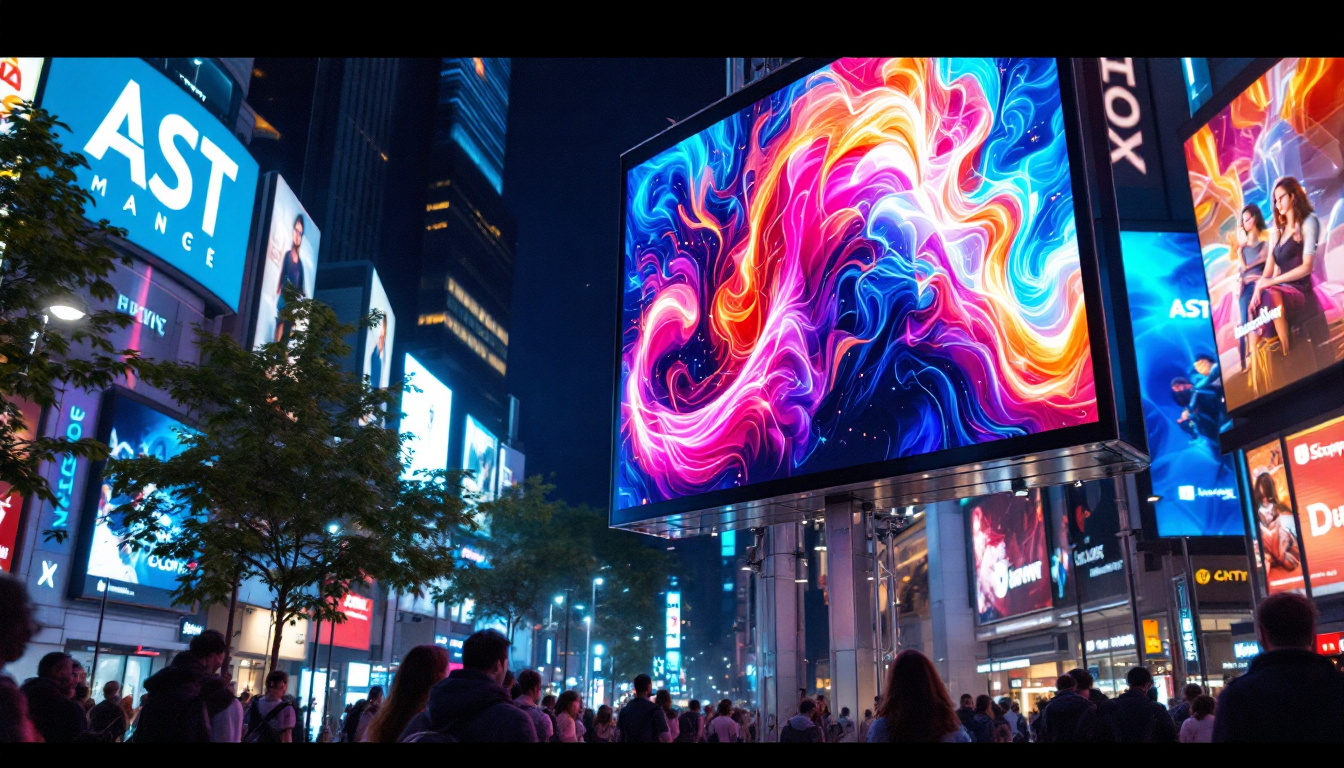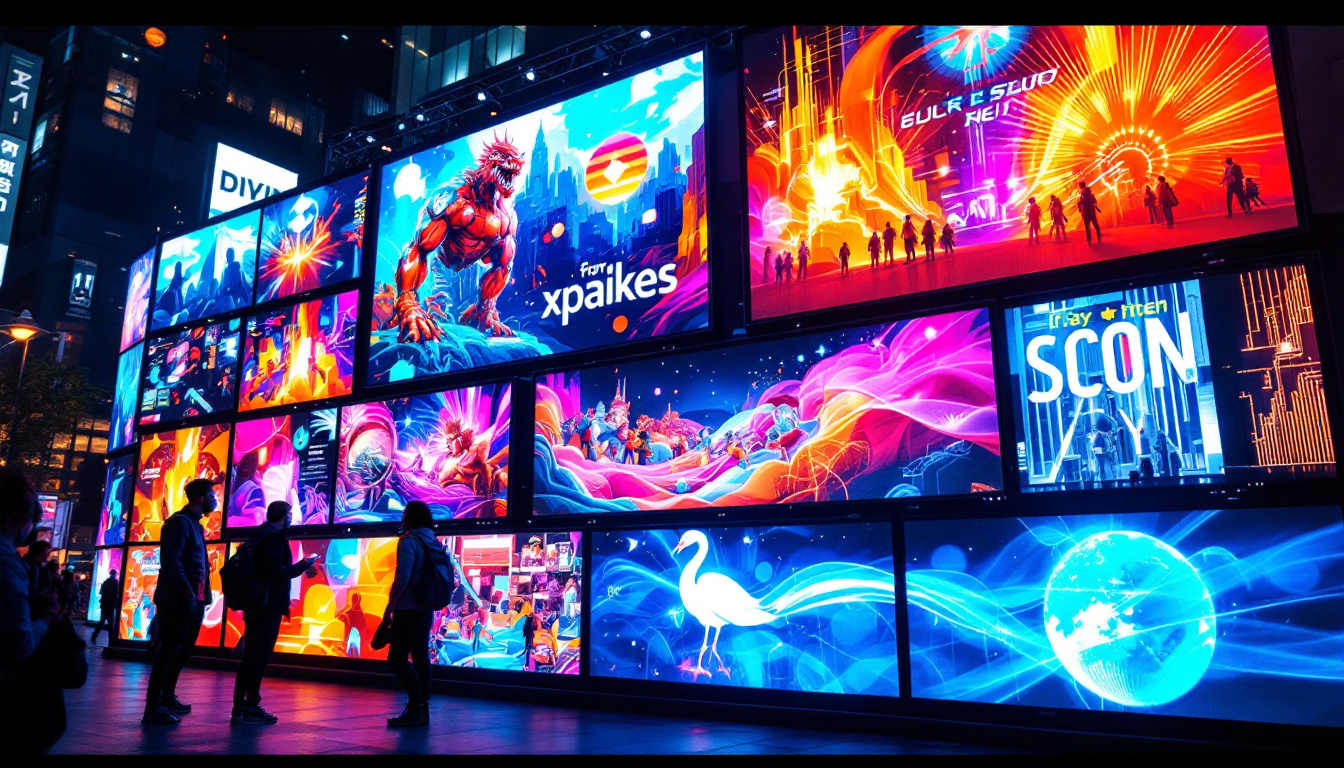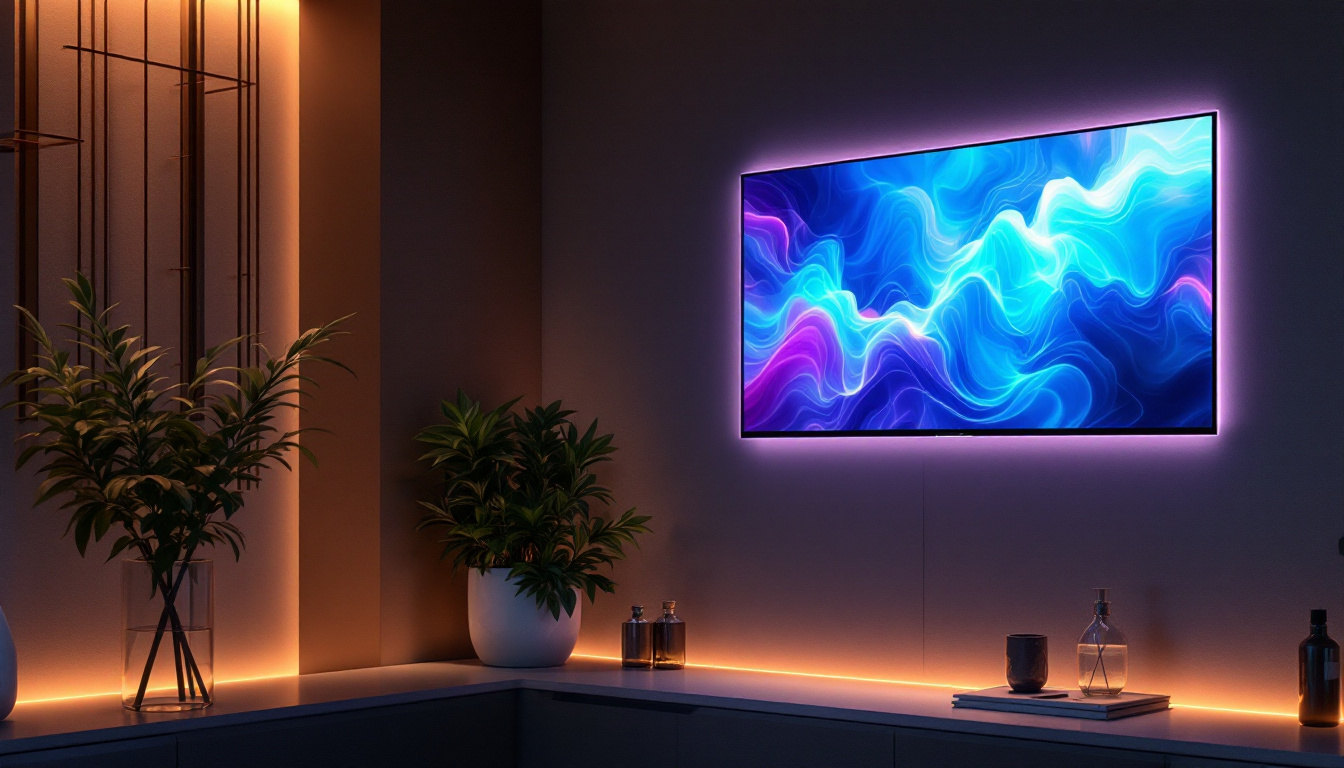In the world of modern display technology, LCD (Liquid Crystal Display) and LED (Light Emitting Diode) are terms that often come up in discussions about monitors, televisions, and other screens. While many consumers use these terms interchangeably, understanding the differences and how they work can significantly impact purchasing decisions. This article aims to clarify the distinctions between LCD and LED displays, explore their functionalities, and provide insights into their applications.
Understanding LCD Technology
LCD technology has revolutionized the way visual information is presented on screens. It relies on liquid crystals that manipulate light to create images. Unlike older display technologies, such as cathode ray tubes (CRT), LCDs are thinner, lighter, and more energy-efficient. The evolution of LCD technology has also paved the way for advancements in various fields, including consumer electronics, medical imaging, and even automotive displays. As a result, LCDs have become ubiquitous in our daily lives, from smartphones and tablets to televisions and computer monitors.
How LCD Works
At the core of an LCD monitor are two layers of polarized glass. Between these layers lies a liquid crystal solution. When an electric current passes through the liquid crystals, they align in such a way that they either block or allow light to pass through. This manipulation of light creates the images we see on the screen. However, LCDs require a backlight since they do not emit light on their own. The backlight, typically made up of LED (light-emitting diode) technology, enhances brightness and contributes to the overall energy efficiency of the display. The combination of liquid crystals and backlighting allows for a wide range of colors and contrasts, making modern LCDs capable of displaying high-definition content with remarkable clarity.
Advantages of LCD Displays
LCD displays offer several advantages over older technologies. They consume less power, which makes them more energy-efficient and environmentally friendly. Additionally, LCDs provide sharper images and better color accuracy, making them ideal for various applications, from professional graphic design to everyday computing. The slim profile of LCDs also allows for sleek designs in modern electronics, enabling manufacturers to create thinner and lighter devices that are easier to transport and use in various settings. Furthermore, advancements in LCD technology have led to the development of features such as touch sensitivity and high refresh rates, enhancing user interaction and experience.
Limitations of LCD Technology
Despite their many benefits, LCDs are not without limitations. One significant drawback is their viewing angles. Colors can appear washed out or distorted when viewed from extreme angles. Furthermore, response times can be slower compared to other technologies, which can affect performance in fast-paced gaming or video playback scenarios. Additionally, while LCDs have improved in terms of contrast ratios, they still struggle to achieve the deep blacks that OLED (organic light-emitting diode) displays can offer. This limitation can impact the overall visual experience, particularly in dark scenes or when watching movies. As technology continues to evolve, researchers are exploring ways to overcome these challenges, potentially leading to even more advanced display technologies in the future.
The Role of LED in Display Technology
LED technology, while often associated with LCDs, represents a different approach to display illumination. Essentially, LED displays are a type of LCD that uses LEDs for backlighting instead of traditional fluorescent lamps. This shift in technology has revolutionized the way we experience visual content, allowing for thinner, lighter displays that deliver stunning picture quality. The integration of LED technology has not only enhanced the aesthetic appeal of devices but has also improved energy efficiency, making it a preferred choice for manufacturers and consumers alike.
Types of LED Backlighting
There are primarily two types of LED backlighting: edge-lit and full-array. Edge-lit LED displays have LEDs positioned along the edges of the screen, allowing for a thinner design. This design is particularly advantageous for ultra-slim televisions and portable devices, where space is at a premium. In contrast, full-array LED displays have a grid of LEDs behind the entire screen, providing more uniform brightness and better contrast ratios. This configuration allows for localized dimming, which means that certain areas of the screen can be dimmed or brightened independently, resulting in deeper blacks and more vibrant colors, especially in high-definition content.
Benefits of LED Displays
LED displays offer several advantages over standard LCDs. They provide brighter images, improved contrast ratios, and better color reproduction. The enhanced brightness is particularly beneficial in brightly lit environments, where traditional displays may struggle to maintain visibility. Additionally, LED technology is known for its longevity, often lasting significantly longer than traditional fluorescent backlights. This longevity contributes to lower maintenance costs and a reduced environmental impact over time. Moreover, LED displays are increasingly being recognized for their energy efficiency, consuming less power than their predecessors, which not only saves on electricity bills but also aligns with global sustainability efforts. As technology continues to advance, the integration of features such as HDR (High Dynamic Range) and improved color gamut capabilities further elevates the viewing experience, making LED displays an essential component in modern display technology.
Comparing LCD and LED Displays
While LED displays are technically a subset of LCD technology, the differences between them warrant a closer examination. Understanding these distinctions can help consumers make informed choices when selecting a monitor or television.
Brightness and Contrast
One of the most noticeable differences between standard LCDs and LED displays is brightness. LED displays are generally brighter, thanks to the efficiency of LEDs in producing light. This increased brightness can enhance the viewing experience, especially in well-lit environments. Furthermore, LED technology allows for better contrast ratios, making dark scenes appear deeper and more dynamic.
Color Accuracy
Color accuracy is another area where LED displays tend to outperform traditional LCDs. The ability of LEDs to produce a wider color gamut means that images can appear more vibrant and true to life. This characteristic is particularly beneficial for professionals in fields such as photography, graphic design, and video production, where color fidelity is paramount.
Energy Efficiency
Both LCD and LED displays are more energy-efficient than older technologies, but LED displays take this efficiency a step further. The use of LEDs for backlighting reduces power consumption, making them an eco-friendly choice. This efficiency not only lowers electricity bills but also contributes to a smaller carbon footprint.
Applications of LCD and LED Displays
The versatility of LCD and LED displays means they are used in a wide range of applications, from consumer electronics to professional environments. Understanding where each type excels can help users choose the right display for their needs.
Consumer Electronics
In the realm of consumer electronics, both LCD and LED displays are prevalent in televisions, computer monitors, and portable devices. LED technology has become the standard for most modern televisions due to its superior picture quality and energy efficiency. Meanwhile, LCD monitors remain popular for desktops and laptops, offering a balance of performance and cost.
Professional Use Cases
In professional settings, the choice between LCD and LED displays often depends on specific requirements. For graphic designers, photographers, and video editors, LED displays are often preferred due to their superior color accuracy and contrast. On the other hand, standard LCDs may still be suitable for general office tasks, where color fidelity is less critical.
Gaming and Entertainment
For gamers and entertainment enthusiasts, the choice of display technology can significantly impact the experience. LED displays, with their faster response times and better refresh rates, are often favored for gaming. They provide smoother visuals and reduce motion blur, enhancing gameplay. Meanwhile, LCDs can still perform adequately for casual gaming and media consumption.
Future Trends in Display Technology
As technology continues to evolve, the future of LCD and LED displays is poised for exciting developments. Innovations in display technology are likely to enhance performance, improve energy efficiency, and expand applications.
Mini-LED and Micro-LED Technologies
Emerging technologies such as Mini-LED and Micro-LED are set to redefine the display landscape. Mini-LED technology involves using smaller LEDs for backlighting, allowing for more precise control over brightness and contrast. This results in improved HDR (High Dynamic Range) performance and enhanced visual experiences. Micro-LED, on the other hand, eliminates the need for backlighting altogether, as each pixel emits its own light, offering unparalleled color accuracy and contrast.
OLED Displays
Organic Light Emitting Diode (OLED) displays are another technology gaining traction. Unlike LCDs and LED displays, OLEDs do not require backlighting, as each pixel emits its own light. This results in deeper blacks, wider viewing angles, and vibrant colors. While OLED technology is currently more expensive, it is becoming increasingly popular in high-end televisions and monitors.
Integration with Smart Technology
As smart technology continues to permeate everyday life, displays are becoming more integrated with digital ecosystems. Smart TVs and monitors equipped with built-in streaming capabilities, voice control, and connectivity options are becoming the norm. This trend is likely to continue, making displays not just visual tools but central hubs for entertainment and productivity.
Conclusion
Understanding the differences between LCD and LED displays is essential for making informed decisions in today’s technology-driven world. While both technologies have their strengths and weaknesses, LED displays generally offer superior performance in terms of brightness, color accuracy, and energy efficiency. As advancements in display technology continue to emerge, consumers can look forward to even more exciting options in the future.
Whether for personal use, professional applications, or entertainment, the right display can enhance the overall experience. By considering the specific needs and preferences, users can select the ideal monitor or television that aligns with their requirements, ensuring a satisfying viewing experience for years to come.
Discover LumenMatrix LED Display Solutions
Ready to experience the pinnacle of display technology? LumenMatrix is at the forefront of LED innovation, offering a diverse range of LED display modules tailored to your unique needs. From Indoor and Outdoor LED Wall Displays to specialized solutions like Vehicle, Sports, and Floor LED Displays, LumenMatrix has the cutting-edge technology to transform your visual communication. Elevate your brand visibility and captivate your audience with our Custom, All-in-One, and Transparent LED Displays. Check out LumenMatrix LED Display Solutions today and join the revolution in high-impact, energy-efficient visual experiences.































